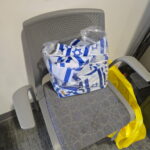History Makes Partial Recovery
A paper from the Foreign Policy Research Institute (FPRI) displays some of the sharpest insights from academia in many a year but fails to offer perspectives that need to be considered for our history to be based on perception rather than reality. “In the subsequent American-led war to turn back Iraqi leader Saddam Hussein’s occupation of Kuwait, and U.S. interventions in Panama and Somalia, the Bush administration had trouble articulating a strategy beyond defeating bad dictators,” Jeremi Suri writes in a paper distributed by FPRI. “The post-Cold War Defense Planning Guidance emphasized ‘common defense against aggression’ and actions to ‘preclude any hostile power from dominating a region critical to our interests.’”
“Like the president, leaders of the Defense Department sought to assure U.S. dominance without any clear purpose beyond just that.” Suri is a history professor at the University of Wisconsin at Madison.
“The Bush administration lacked a clear framework for explaining its small and often unsatisfactory wars,” Suri wrote. “When the United States chose not to intervene—in China after the Tiananmen Square crackdown in June 1989 and in the Yugoslav civil war—it also could not articulate a strategy that explained tolerating these atrocities.”
“Time and again, policy decisions appeared reactive and uncertain in their broader purposes.” Indeed, many were the reasons given for the original invasion of Iraq.
“In a context of perceived ‘strategic depth,’ the rapid policy transformations of the late 1980s, surrounding big issues like the nature of the Soviet threat and the prospects of German unification, gave way to slow, tentative, and agonizing decision making about American interventions in strategically less significant places: Panama, Somalia, Haiti, Bosnia, Kosovo, and Rwanda,” Suri observes. “This was the ‘regional defense strategy’ of Cheney, Wolfowitz, Libby, and their Democratic successors in action.”
“The 1990s did not witness a return of classic great power politics (‘back to the future’), as one political scientist famously predicted,” Suri notes. “Instead, the decade was dominated by small policy decisions, misguided political controversies, and half measures.”
As it happens, a report from the Congressional Research Service (CRS) shows that Bush (41) engaged in nearly as many military interventions in four years—14—as his predecessor, Ronald Reagan did in eight—15.
As for 41’s successor, Suri notes that “At almost all costs, he avoided the commitment of American troops on foreign territory.” Nevertheless, the CRS shows that President Clinton intervened militarily 66 times.
Still and all, most of these were, as Suri notes, “half measures like bombing without ground troops that satisfied no one and provoked many.” Meanwhile, like his predecessor, President Clinton cut defense spending.
“It has risen again more recently—from 2001 to the present—to support military operations in Iraq and Afghanistan and other activities related to the war on terrorism,” the Congressional Budget Office (CBO) reports. “During the intervening periods, defense spending tended to decline as a percentage of GDP. “
“Overall, such spending has averaged about 5 percent of GDP during the past 40 years and about 4 percent of GDP over the past 20 years.”
“Sophisticated strategic thinkers like George Kennan, Dean Acheson, and Henry Kissinger gave way to the more technocratic inclinations of James Baker, Brent Scowcroft, Anthony Lake, and even Colin Powell,” Suri concludes. “The ‘wise men’ of the Cold War had defined clear national interests, identified pressing threats (foreign and domestic), and devised policies that promised to secure interests from threats at manageable cost.”
“Their successors did not do any of these things consistently.” Suri may have the second half of this formulation right but the first part, which gets consistently repeated in texts academic and general, does not hold up so well on closer examination.
“This may come as a surprise to modern readers, accustomed to recent books and essays portraying him as a Cold War hawk and ardent foe of Stalin,” M. Stanton Evans writes of Acheson in Blacklisted By History: The Untold Story of Senator Joe McCarthy. “In 1945, when he assumed the reins of State, Acheson had a very different profile.”
“He was known as an advocate of conciliating Moscow, in sharp contrast to hardliners in the diplomatic corps who wanted to take a tough anti-Red stance in the postwar era.” It was Acheson who defended Soviet super spy Alger Hiss, long after his guilt had become a matter of record.
Similarly, the realpolitik of Kissinger and his patron is also more myth than account. “Himself a hero to the anti-communist right for his part in exposing Alger Hiss, Nixon had the credentials for appealing to McCarthy, while diligently cultivating his role as a faithful second in command to Ike,” Evans writes. “Nixon’s balancing act between such countervailing forces would continue for the next two decades and eventually get him to the White House.”
“(It was only when he reached that long-sought goal that he would fall off the teeter-totter, landing with Henry Kissinger in Red China, thereafter pushing on into the mists of détente with Moscow.)”
Malcolm A. Kline is the Executive Director of Accuracy in Academia.




